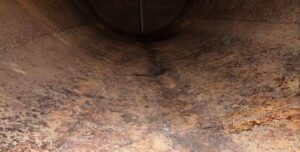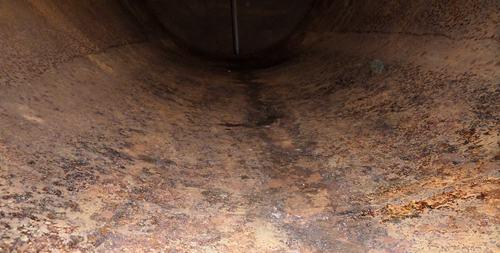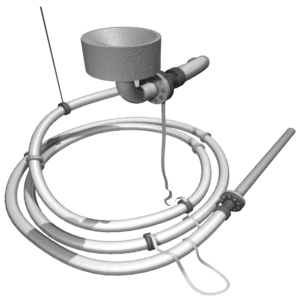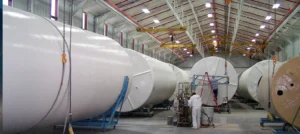As the owner or operator of aboveground storage tanks, you know the importance of safeguarding your assets and ensuring compliance with industry regulations. However, one threat that often goes unnoticed is internal corrosion, slowly eating away at tank walls and seams from within. Regular inspections and maintenance typically monitor and address external corrosion, but internal corrosion may remain invisible until catastrophic failure. Implementing an effective internal corrosion management strategy is essential to mitigate risk, limit loss, and prevent disastrous environmental and safety consequences. By understanding key mechanisms of internal corrosion in storage tanks and establishing the right prevention and monitoring techniques, you can protect your tanks and keep your operations running safely and efficiently for the long haul.

Aboveground Storage Tanks Internal Corrosion Direct Assessment
To properly maintain the integrity of your aboveground storage tanks (ASTs), regular inspections are essential. Undetected Storage tank corrosion can lead to leaks, spills, and other issues that threaten the environment, safety, and your operations.
Storage tank inspection Tips
Inspections Should Be Performed By Qualified Personnel
Only inspectors with proper training and certifications should perform AST inspections. They have the expertise to identify signs of internal corrosion and properly assess tank integrity. Inspections should follow industry standards like API 653 and STI SP001.
Inspect Annually And when the Tank Is Emptied
At a minimum, inspect the internals of ASTs annually.
Look for signs of corrosion like pitting, cracking, or delamination. Check tank bottoms and welds, which are common areas for corrosion. Measure any areas of significant corrosion to determine if tank integrity is compromised.
Choose The Right Inspection Methods
Options like visual inspection, ultrasonic testing (UT), and radiographic testing (RT) allow inspectors to examine tank floors, shells, roofs, and welds. Visual inspection alone may miss signs of corrosion. UT and RT provide more comprehensive evaluations of tank thickness and welds. For tanks with challenging geometries, remote field testing (RFT) and guided wave ultrasonic testing (GWUT) can inspect areas difficult to reach.
Act-On Inspection Findings To Prevent Corrosion Damage
Address any signs of corrosion or damage found during inspections immediately. Make necessary repairs or replacements to ensure tank integrity and safe operation. Institute additional prevention strategies like protective coatings, cathodic protection, or design modifications to avoid future internal corrosion.
With ongoing, professional AST inspections and prompt action to address issues found, you can effectively manage internal corrosion and safeguard your storage tanks for the long term. Continuous corrosion prevention and monitoring is the key to AST integrity management.
Choose the Right Construction Materials
To maximize the lifespan of your aboveground storage tanks, choosing corrosion-resistant construction materials is key. The two most common options are carbon steel and stainless steel.
Carbon steel tanks typically offer the lowest upfront cost but require the most maintenance to prevent corrosion. These tanks must be coated and painted to protect the interior, and the coatings require frequent inspections and touch-ups. Cathodic protection systems, which use an electric current to prevent rusting, are also often necessary for carbon steel tanks.
Stainless steel, such as grade 304 or 316, provides superior corrosion resistance and lower long-term costs. Stainless steel tanks do not require interior coatings or cathodic protection. However, stainless steel tanks have a higher initial capital cost. For many applications, especially those involving corrosive chemicals, stainless steel construction is the optimal choice to maximize tank lifespan and minimize costs.
Other alternatives include fiberglass-reinforced plastic, thermoplastic, and nickel alloys like Alloy 20. Each material has its own strengths and limitations depending on factors like cost, corrosion-resistance needs, temperature requirements, and tank size or configuration. Choosing the right tank construction for your specific conditions and priorities can help avoid premature failures, unplanned outages, and costly repairs or replacements. Robust internal corrosion prevention starts with selecting a tank built to last.
Maintaining Proper Tank Chemistry
Maintaining proper tank chemistry is essential to controlling internal corrosion in aboveground storage tanks. The internal environment of a storage tank directly impacts the rate of corrosion. Several key factors must be monitored and adjusted to optimize tank chemistry.
pH Level
The acidity or alkalinity of the liquid in the tank, known as pH, greatly influences how corrosive the environment will be. A neutral pH of 7 is ideal. Fluids that are very acidic (pH of 5 or less) or very alkaline (pH of 9 or greater) will accelerate corrosion. The pH should be tested regularly and adjusted as needed using chemicals to raise (caustic soda) or lower (acids) the pH.
Dissolved Oxygen
Oxygen dissolved in the stored liquid provides fuel for corrosion reactions to occur. Minimizing dissolved oxygen is key. This can be done by:
- Nitrogen blanketing: Filling the vapor space in the tank with an inert gas like nitrogen to displace oxygen.
- Chemical oxygen scavengers: Adding chemicals that bind with and remove oxygen from the liquid.
- Vapor recovery systems: Installing systems that recover vapors displaced from the tank to limit oxygen entering through vents.
Temperature
Corrosion reactions speed up at higher temperatures, so maintaining a stable, moderate temperature in the tank is important. The ideal temperature depends on the specific chemistry of the stored fluid. Temperature should be monitored and controlled using insulation, heat exchangers, and other equipment as needed.
By routinely testing tank chemistry and making any necessary adjustments to pH, dissolved oxygen levels, and temperature, the internal environment can be optimized to limit corrosion. Careful monitoring and control of these factors are key to the successful management of internal corrosion in aboveground storage tanks.
Fuel Storage Tank Coating
Applying protective coatings and linings is one of the most effective methods for controlling internal corrosion in aboveground storage tanks. These barriers separate the steel tank walls from the contents stored inside. The most common options include:
Epoxy coatings
People frequently use two-part epoxy coatings for internal tank lining. They mix the epoxy resin and hardener together and apply them to the cleaned tank interior. Then, they chemically react to form a durable plastic coating. Epoxy coatings provide excellent chemical resistance and adhesion to steel. However, they can be difficult to apply and may require frequent touch-ups or recoating.
Polyurethane coatings
The Polyurethane coatings offer similar chemical resistance to epoxies with the added benefit of greater flexibility and impact resistance. Polyurethane coatings are also typically easier to apply. On the downside, polyurethanes may have lower temperature resistance and adhesion in some chemical environments.
Rubber linings
The Rubber sheets or membranes can also be used to line tank interiors. Rubber linings provide outstanding chemical resistance and flexibility but often require welding seams and may be prone to tearing or puncturing. Rubber linings also tend to be more expensive than liquid-applied coatings.
To maximize the effectiveness of any tank lining or coating, proper surface preparation and application are essential. The steel surface must be cleaned to near-white metal, without any rust, mill scale or contaminants present. Multiple coats of the lining or coating material are usually required to achieve sufficient thickness and coverage. Regular inspections should check for any damage or deficiencies in the lining that could expose the underlying steel.
With the proper selection, application and maintenance of internal protective systems, aboveground storage tank owners and operators can substantially reduce corrosion rates and extend the service lives of their assets. One of the best investments that can be made to protect both the environment and the bottom line is applying a high-performance coating or lining.
Install Cathodic Protection Systems
Cathodic protection systems can help prevent internal corrosion in aboveground storage tanks. By installing sacrificial anodes for impressed current systems, you can protect the internal surfaces of your tanks from corrosion.

Sacrificial Anode Systems
Sacrificial anode systems provide protection through the controlled corrosion of sacrificial anodes made of a metal that is more electrically active than the metal of the tank.People commonly use magnesium and zinc as sacrificial anode materials for internal tank protection because connecting the anodes directly to the tank causes the tank to corrode.These systems require periodic inspection and replacement of the anodes.
Impressed Current Systems
Impressed current cathodic protection systems provide protection through the application of direct electrical current to the tank surface. An external power source is used to supply direct current through anodes in the tank. The current flowing from the anodes to the tank surface creates a protective film over the entire internal surface area. Impressed current systems typically require less maintenance than sacrificial anode systems but have higher initial installation costs.
Regular monitoring and adjustment of cathodic protection systems are needed to ensure maximum protection. Periodically check the voltage and current levels to verify whether you are supplying the correct amounts of protection.Cathodic protection systems, when properly installed and maintained, can provide effective long-term prevention of internal corrosion in aboveground storage tanks.
Maintain Proper Chemical Treatment
To prevent corrosion damage inside aboveground storage tanks (ASTs), proper chemical treatment is essential. Chemical inhibitors interfere with the electrochemical reactions that cause corrosion, preventing the formation of rust and pitting.
Selecting Chemical Inhibitors
Choose inhibitors specifically designed for AST internal corrosion prevention. Common options include:
- Amines and amino alcohols: Neutralize acids and form protective films. Effective for steel tanks.
- Phosphates and polyphosphates: Form protective films and coat metal surfaces. Suitable for most tank materials.
- Sodium nitrite: Prevents corrosion in low-oxygen water systems. Used in steel tanks.
- Molybdates: Form insoluble films on metal surfaces. Compatible with steel, aluminum, and other alloys.
The specific inhibitor used depends on factors like tank material, stored product chemistry, and local environmental conditions. Always follow the manufacturer’s dosage recommendations for optimal results.
Proper Inhibitor Injection
To ensure the best protection, inject inhibitors properly into the AST by adding them to the tank in a consistent, controlled fashion using a chemical injection pump or similar metering system. The injection point should ensure even distribution throughout the tank.
You should monitor inhibitor levels regularly to maintain proper concentrations.Designers create inhibitors to provide protection even at low doses, but corrosion may occur if concentrations are below recommended levels.
With vigilant monitoring and adjustment of chemical inhibitor treatment, the interior surfaces of aboveground storage tanks can remain in good condition for many years. However, even the best inhibitors cannot prevent corrosion indefinitely, so plan and budget for eventual tank maintenance, repair, or replacement when necessary.
Conclusion
Your aboveground storage tanks are a critical component of your operations, but only if you take the necessary steps to protect them from internal corrosion. By implementing an effective internal corrosion management program, you can avoid costly damage to your tanks and ensure their safe, long-term use. Conduct regular inspections and testing to monitor for corrosion, and promptly take action if you detect any issues. The small investments you make now in prevention and maintenance will pay off substantially in the years to come through increased efficiency, environmental compliance, and risk reduction. Make internal corrosion management a priority – your operations depend on it.




